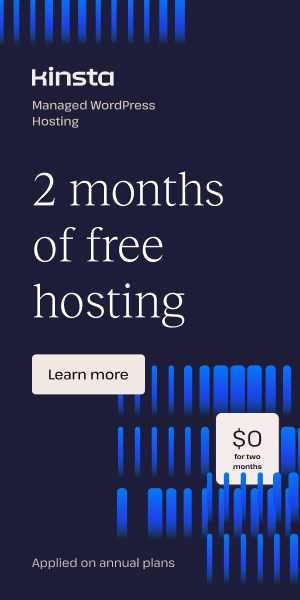How to Use Figma for WordPress Content Planning
Streamlining Your Content Workflow with Figma and WordPress
For digital content creators and web developers, the seamless planning and implementation of content is critical to launching and maintaining an engaging website. Leveraging Figma2WP Service for your WordPress content planning provides a dynamic way to align design with functionality, optimizing your entire content strategy from concept to publication.
Harnessing Figma for Content Structure and Collaboration
Figma stands out as a powerful design and collaboration tool, particularly valuable for creating wireframes and high-fidelity mockups that serve as blueprints for your WordPress pages. Unlike static design files, Figma’s cloud-based environment supports real-time collaboration among content strategists, designers, and developers. This synergy streamlines feedback loops, enabling faster iteration and alignment with your content goals.
- Wireframing: Using Figma, you can draft the structural layout of key content blocks — headings, paragraphs, calls-to-action — clearly visualizing the information architecture before building on WordPress. This ensures that content resonates with user flow and search intent.
- Responsive Mockups: Creating desktop, tablet, and mobile views in Figma enhances planning for different devices to guarantee readability and engagement across platforms.
- Content Hierarchy: Figma helps organize your WordPress content by defining visual weight and element positioning, which directly impacts SEO and user experience.
By setting up your content framework in Figma, editorial teams can collaboratively map out topics, headings, and text length estimates, making it a true content strategy partner.
Converting Figma Designs into WordPress Content
The process of turning your Figma workflows into functional WordPress pages often requires technical steps that can be challenging without coding expertise. Thankfully, specialized tools and services, such as Figma2WP and the Yotako Figma to WordPress plugin, automate much of this workflow.
- Exporting the Design: Start by completing your content layout in Figma, ensuring all UI components are correctly named and arranged.
- Using Automation Plugins: Plugins like Yotako analyze your Figma file, translating design tokens and layout grids into WordPress theme structures. This process generates fully responsive, editable content blocks, bridging the gap between design and CMS.
- Manual Tweaks and Enhancements: After automated conversion, a developer or content manager typically fine-tunes the output—adjusting typography, making forms functional, or enhancing SEO elements.
This method accelerates your Figma to WordPress content transition, reducing time-to-publish and minimizing errors. For detailed guidance, Contact Us to explore tailored solutions for your project.
Implementing Dynamic Content Scheduling with Figma and WordPress
One of the most advanced capabilities in content planning enabled by integrating Figma with WordPress is dynamic content scheduling. This feature allows your site to automatically display or update content based on timing rules, perfect for marketing campaigns, promotions, or editorial calendars.
- Design in Figma: Prepare seasonal layouts, promotional banners, or event-specific content mockups.
- Automate Publishing in WordPress: Utilize WordPress plugins like WP Auto Schedule or page builders such as Elementor to set publishing dates aligned with your campaign timelines.
- Synchronize Design and Content Delivery: Services like Figma2WP’s dynamic content scheduling let you seamlessly pair design elements in Figma with WordPress’ scheduling logic, creating flawless, timed releases.
Consider the example of a retail brand preparing a holiday campaign. By drafting different promotional banners and page sections in Figma and automating their WordPress deployment, they ensure consistent messaging and peak engagement during prime sales periods without manual intervention.
Case Study: Boosting Efficiency in Content Pipelines
A digital marketing agency serving clients across the USA, UK, and Canada leveraged Figma and WordPress integration to overhaul their content planning workflow:
- Used Figma to build detailed content layout prototypes collaboratively with writers, designers, and SEO experts.
- Employed Figma2WP to convert designs into modular WordPress themes with editable content blocks.
- Implemented WordPress dynamic scheduling plugins to manage blog post releases and promotional banners automatically.
Outcome: A 40% reduction in content deployment time, higher design-to-development fidelity, and improved user engagement metrics due to optimized content presentation and delivery timing.
Optimizing Your Figma Workflow for Content Strategy Success
To maximize your content planning effectiveness, it’s essential to establish a robust Figma to WordPress workflow that prioritizes clarity, collaboration, and automation:
- Define Clear Content Objectives: Align your Figma wireframes with content goals like SEO keywords, user journeys, and brand messaging.
- Utilize Figma Components: Reusable components for headers, text blocks, and calls-to-action in Figma ensure consistency and faster iterations.
- Integrate Content Calendars: Link your Figma designs with editorial timelines and WordPress scheduling to maintain a steady flow of updates.
- Leverage Automation Tools: Explore plugins and services such as Figma2WP, Yotako, and Elementor for efficient design-to-publish cycles.
This approach reduces bottlenecks and empowers teams to focus on creativity and strategic planning rather than repetitive manual tasks.
Next Steps for Elevating Your Content Creation
Moving from simply designing content in Figma to a fully functional WordPress site requires a strategic approach that balances creativity with technology. By embracing tools like Figma2WP Service, utilizing AI-powered plugins, and incorporating dynamic scheduling, you position your content for sustained success.
Whether you’re a freelancer, agency, or enterprise, exploring the synergy between Figma and WordPress will enhance your content strategy, accelerate production timelines, and ensure your digital presence remains fresh and impactful.
Ready to transform your content planning and publishing process? Don’t hesitate to Contact Us for personalized guidance and expert support in bringing your Figma designs to life on WordPress.
More From Our Blog
Unlocking the Power of Hands-On Web Design with Modern Tools In today’s digital age, the ability to craft your own website has transformed from a daunting technical challenge into an engaging creative process accessible to enthusiasts, DIYers, and professionals alike. Services like Figma2WP Service empower you to convert your design concepts into fully functional WordPress Read more…
Elevate Your Outdoor Presence with Cutting-Edge Garden Themes for WordPress Creating a captivating online presence for gardening businesses or outdoor-focused sites demands a skilled blend of aesthetics, functionality, and thematic relevance. This is where garden themes for WordPress shine—offering visually rich, user-friendly templates tailored to beautifully showcase plants, gardening products, and outdoor lifestyles. With the Read more…


